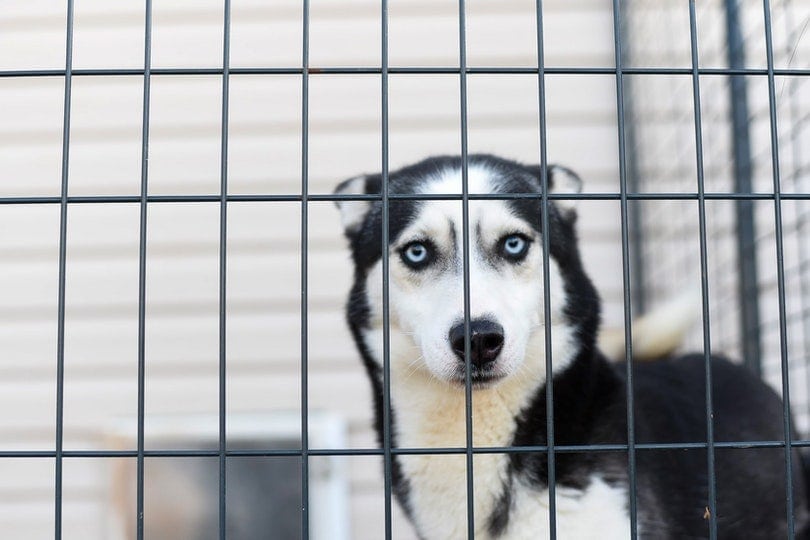5 Ways to Train Your Dog to Stop Attacking Chickens

Updated on
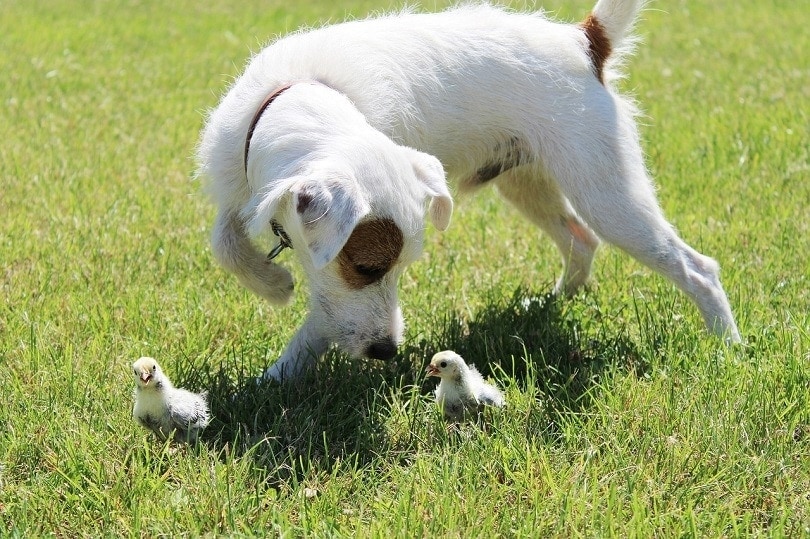
Many dogs still have a strong prey drive that’s inherited from their ancestors. Even though many dog owners socialize their dogs and get them used to interactions with humans, dogs, and cats, few of us think about socializing our dogs with chickens. But what happens when you decide to start keeping some chickens and you find out that your dog wants to hunt them down?
This problem can quickly get out of hand. If your dog starts to kill your chickens, it can become a very difficult habit to break, which may build resentment in you for your dog. You need to put a stop to this behavior immediately, which is why we’ve gathered the five best methods for training your dog to stop attacking chickens. If the first method you choose doesn’t work, keep trying until you find the one that does.
How to Train Your Dog to Stop Killing Chickens
1. Leashed Command and Pull
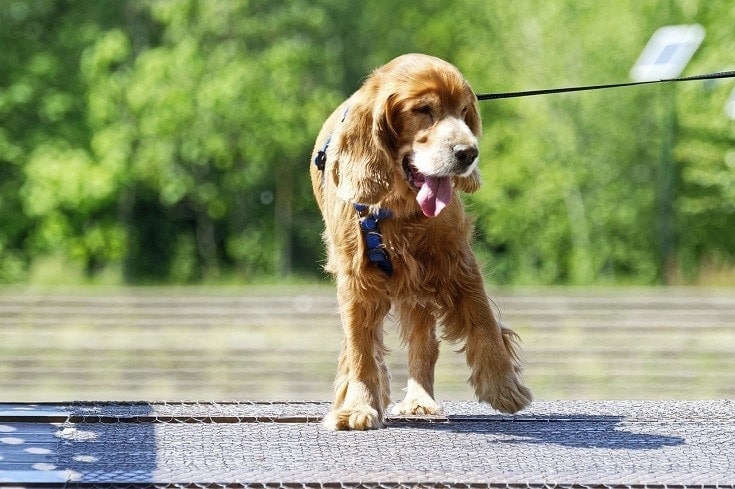
This method involves keeping your dog leashed and slowly bringing it closer to the chickens until it begins to exhibit aggressive behavior, at which point you’ll reprimand them.
| Step 1: | Put the chickens inside of the chicken coop, but make sure they’re still completely visible. |
| Step 2: | Leash your dog and begin about 10 feet from the chicken coup. |
| Step 3: | Very slowly walk towards the chicken, making sure your dog can see them the whole time. As you approach, remain very calm and watch your dog for a reaction. |
| Step 4: | When you get close enough that your dog begins to lunge or act aggressively toward the chickens, you must firmly pull on the leash and loudly command your dog to “STOP”. Your reaction to his behavior must be immediate, there cannot be any pause between your dog’s aggression and your reaction. |
| Step 5: | Repeat, repeat, and repeat again. You’ll need to do this several times a day for possibly many weeks or even months until your dog gets it. Once you can get right up close to the chickens and your dog makes no aggressive moves, it’s time to remove the leash. |
| Step 6: | Continue the same process but without a leash. Once your dog can get close to the chickens without a leash and exhibits no aggressive signs, it should be done with attacking the chickens. |
2. Close Proximity
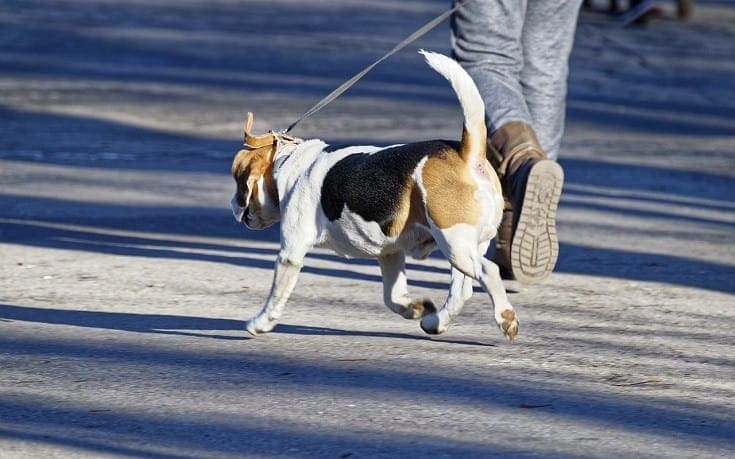
For this method, you’ll bring your dog close to the chickens while on a leash and wait for them to calm down, at which time you’ll begin heaping on positive praise. This will evolve into giving your dog commands nearer and nearer to the chickens until it can listen and obey without paying any attention to the chickens, even when they’re very close by.
| Step 1: | Leash your dog and bring it near the chickens. Once you’re close enough that your dog is reacting to the chickens, tie it up. |
| Step 2: | Once your dog calms down, begin to heap positive praise on it. Refrain from giving any praise until your dog is totally calm. |
| Step 3: | Move your dog a bit closer and repeat the process. |
| Step 4: | Once your dog is no longer reacting to the chickens like it first did, you can start giving your dog simple commands while in the presence of the chickens. Commands like “sit” and “lie down” work best. The goal is for your dog to obey the commands without paying any attention to the chickens. |
| Step 5: | Repeat this process of giving commands in closer and closer proximity to the chickens. |
| Step 6: | Once your dog obeys all commands when the chickens are nearby, you can take it off the leash and repeat the same steps without the leash. |
3. Drop on Command

This method requires training your dog to drop treats or toys on command so they are used to giving up the treat they want and obeying your command to drop what’s in their mouth.
| Step 1: | Start by giving your dog a toy they like such as a ball or a bone. This Kong Squeezz Ball is a great choice because it’s available in several sizes and it’s strong enough to hold up through plenty of training. Once it’s in your dog’s mouth, hold the other end with one hand while holding a tasty treat near its mouth with the other. |
| Step 2: | Tell your dog to “drop it.” When it opens its mouth, take the toy and give them the treat, followed by loads of praise. You may need to coax the dog to release the treat at first. |
| Step 3: | Repeat until your dog is comfortable letting go of the toy for the treat when you say drop it. |
| Step 4: | Start asking your dog to “drop it” at random points through the day when they have a toy or treat in their mouth. Try to do this at least 10 times each day. |
| Step 5: | Now, start getting sneaky. Do the same drop-it game with the toy, but only pretend to have a treat in your hand. Once they drop it, show them your empty fingers, but then give them three treats as a reward. |
| Step 6: | Repeat this process until your dog always drops the ball for your empty fingers and you’re no longer providing treats. |
| Step 7: | Graduate up to something tastier than a toy. Try using a large edible chew like the Starmark Edible Dog Rings. Hold it while your dog has the other end in its mouth. Pretend to show them a treat and say “Drop it”. When they do, show them your empty fingers, then provide three treats, only the first time they do it. After this, only show them the empty fingers. |
| Step 8: | Continue until your dog will drop the hard chew every time you ask. |
| Step 9: | Repeat the whole process once more with a food treat until you’re certain your dog will drop anything when you command. |
4. Distance Training

This method has you giving commands to your dog as you approach the chickens, moving closer each day.
| Step 1: | With your dog leashed, begin moving toward the chickens at a slow speed. |
| Step 2: | With each step, give your dog a simple command such as sit or lay down. |
| Step 3: | Make a mental note at the point when your dog stops listening and starts paying attention to the chickens. From here, take a few steps away from the chickens and continue having your dog perform commands here. |
| Step 4: | The following day, repeat this procedure, moving slightly closer than the day prior. |
| Step 5: | Each day, repeat once more, continuing to move closer until your dog obeys commands right next to the chickens. |
| Step 6: | Repeat this entire process once more, but this time, with no leash. Once your dog can complete all of their obedience commands beside the chickens on no leash, they should be done attacking your chickens. |
5. Positive Reinforcement
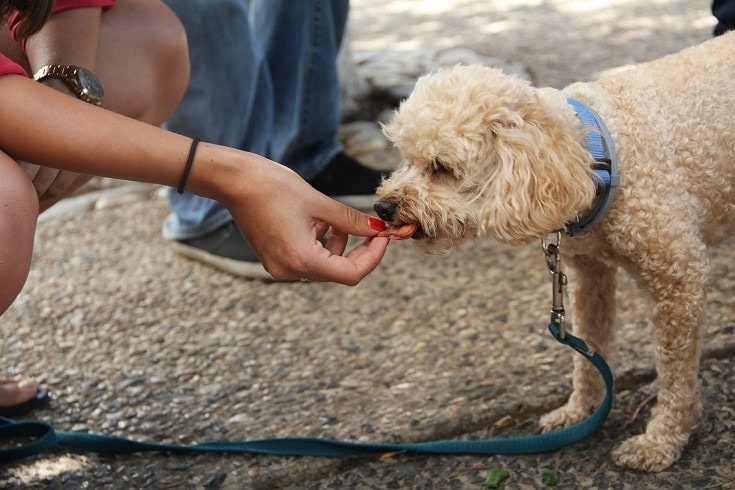
For method five, you’re going to heap positive praise on your dog while they’re calm around the chickens, stopping all praise once they show aggression. This will teach your dog that it’s beneficial to be calm around the chickens.
| Step 1: | Start by securing your chickens in a pen and leashing your dog. |
| Step 2: | Beginning about 10–15 feet from the chickens, start slowly walking toward them with your dog beside you. The whole way, shower your dog with praise, love, petting, and everything that makes them feel special. |
| Step 3: | The very moment your dog displays the smallest bit of aggression towards the chickens, immediately halt all praise. Stand completely still and silent and give your dog no attention. Refuse to move closer until they’re very calm. |
| Step 4: | Once your dog calms down, reward them with loads of praise and several minutes of playtime. |
| Step 5: | Repeat this process every day, moving closer each day than the previous one. |
| Step 6: | Once your dog can get all the way to the chickens without displaying aggression, it’s time to take off the leash and repeat the entire process once more. |
| Step 7: | When you can walk your dog with no leash right up to the chickens and see no signs of aggression, your dog should be done attacking your chickens for good. |
Conclusion: Dog Attacking Chickens
If your dog is attacking your fowl, it can be a major source of headache and frustration. Luckily, there are plenty of ways to train your dog to stop this aggressive and dangerous behavior. Start with whatever method you feel has the best chance of working with your dog.
If that doesn’t work, keep trying until you find the method that finally prevents your dog from attacking your birds.
Featured Image Credit: Jeannette1980, Pixabay



